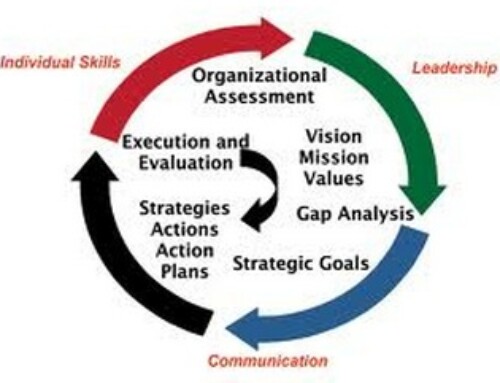Keys to Technology Adoption in 2011
 Anybody that understands our industry knows the average broker and agent hate to change the way they do things. The idea of change creates questions and insecurity. We all get comfortable with our old familiar ways. The idea of having to learn something new, like a new technology, is not very attractive. “If it ain’t broke why fix it”, as the saying goes. But what if it is broke? Or, what if there are just really much better ways to do things or technologies that really do improve our business? How do we get people to use them and when does real adoption take place? Download white paper
Anybody that understands our industry knows the average broker and agent hate to change the way they do things. The idea of change creates questions and insecurity. We all get comfortable with our old familiar ways. The idea of having to learn something new, like a new technology, is not very attractive. “If it ain’t broke why fix it”, as the saying goes. But what if it is broke? Or, what if there are just really much better ways to do things or technologies that really do improve our business? How do we get people to use them and when does real adoption take place? Download white paper
 Change is difficult everywhere, but our industry, for a number of reasons, is even slower than others to adopt new technology. We are an industry of independent contractors working together in an atmosphere of controlled competition. Only a small percentage of agents in our industry are highly successful. Money is tight and the real estate market has contracted so it isn’t surprising that getting people to adopt anything new including technology is a significant challenge. Software companies that really understand how people use and adopt technology today are adjusting. We are seeing new approaches of innovation and not just incrementalism. We believe there are technology innovators emerging that understand the dynamics of our industry,the psychology of adoption and how the rules have changed!
Change is difficult everywhere, but our industry, for a number of reasons, is even slower than others to adopt new technology. We are an industry of independent contractors working together in an atmosphere of controlled competition. Only a small percentage of agents in our industry are highly successful. Money is tight and the real estate market has contracted so it isn’t surprising that getting people to adopt anything new including technology is a significant challenge. Software companies that really understand how people use and adopt technology today are adjusting. We are seeing new approaches of innovation and not just incrementalism. We believe there are technology innovators emerging that understand the dynamics of our industry,the psychology of adoption and how the rules have changed!
In our last paper we looked at the “Shift in Real Estate Technology” and how the broker needs to invest in enterprise solutions and be at the center of the broker/agent/consumer technology experience. We looked at the pressures driving this shift and why this is a great opportunity for brokers to reinvent themselves with their agents as well as an opportunity for them to reduce infrastructure and expenses. This is all true but as we pointed out in that paper, introducing the right technology is just the first step.
 Real technology success only occurs with adoption and use. Success leaves clues, as does failure. In this paper we want to look at what is working today as well as what hasn’t because we believe it shows us some of the “keys to adoption” for today’s technology. Software companies and organizations that understand these keys will move forward while companies that are still delivering technology according to keys that worked even a few years ago will be left behind. The race is on and the rules have changed again!
Real technology success only occurs with adoption and use. Success leaves clues, as does failure. In this paper we want to look at what is working today as well as what hasn’t because we believe it shows us some of the “keys to adoption” for today’s technology. Software companies and organizations that understand these keys will move forward while companies that are still delivering technology according to keys that worked even a few years ago will be left behind. The race is on and the rules have changed again!
Pressure Causes Change But Not Adoption
In our last white paper we talked about the pressures causing the “Shift in Real Estate Technology” that is moving our industry from an MLS centric world to a broker centric technology world. We looked at real pressures that include the need for agents to have better data access, integration and the ability to move beyond MLS limitations while creating competitive differentiation. Real needs have created the pressure to implement software solutions to address these issues and most importantly, we have reached a “threshold of activation” that is causing change to occur.
Without adoption, however, technology is just overhead. We see this throughout our industry where MLSs, for example, offer dozens of products to members while only a very small percentage use them. We see it with brokers as well who adopt technology tools but then can’t get their agents to really use these products. The key is understanding the psychology of technology adoption and how much this has changed over the last few years for all of us. Products that are being designed without this in mind may be installed, but they will not be adopted!
The Psychology of Technology Adoption
 Like it or not, we live in a world where decisions to move towards or away from something happens in milliseconds. We have to be this way because we are inundated with too much data to absorb. We have to filter out 95% of what comes at us very quickly just to manage our day-to-day activities. Like junk mail filters we evaluate incoming data, whether it is from TV, news, the computer or real life, in seconds and we engage or ignore.
Like it or not, we live in a world where decisions to move towards or away from something happens in milliseconds. We have to be this way because we are inundated with too much data to absorb. We have to filter out 95% of what comes at us very quickly just to manage our day-to-day activities. Like junk mail filters we evaluate incoming data, whether it is from TV, news, the computer or real life, in seconds and we engage or ignore.
This same filtering process occurs with technology. We are used to going online, without training, and navigating our way to whatever we need. If we don’t find what we want quickly or a process is too complicated we move on. The window of opportunity for engagement is short. And, once we have abandoned one path we usually don’t go back because we have an impression or evaluation already in place. Time is short so we don’t give too many second chances. What this means for technology is pretty obvious. It better engage quickly and provide some real benefits or it will be passed by.
Download the full white paper to get the full story on technology adoption in 2011!





Dot loop is the only way I write contracts these days.
[…] Previous post: Keys to Technology Adoption in 2011 – New White Paper […]